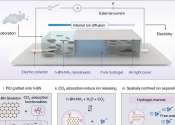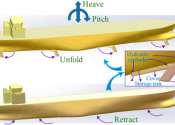A greenhouse (also called a glasshouse) is a building in which plants are grown. These structures range in size from small sheds to very large buildings. A miniature greenhouse is known as a cold frame.
A greenhouse is a structure with different types of covering materials, such as a glass or plastic roof and frequently glass or plastic walls; it heats up because incoming visible solar radiation (for which the glass is transparent) from the sun is absorbed by plants, soil, and other things inside the building. Air warmed by the heat from hot interior surfaces is retained in the building by the roof and wall. In addition, the warmed structures and plants inside the greenhouse re-radiate some of their thermal energy in the infra-red, to which glass is partly opaque, so some of this energy is also trapped inside the glasshouse. However, this latter process is a minor player compared with the former (convective) process. Thus, the primary heating mechanism of a greenhouse is convection. This can be demonstrated by opening a small window near the roof of a greenhouse: the temperature drops considerably. This principle is the basis of the autovent automatic cooling system. Thus, the glass used for a greenhouse works as a barrier to air flow, and its effect is to trap energy within the greenhouse. The air that is warmed near the ground is prevented from rising indefinitely and flowing away.
Although there is some heat loss due to thermal conduction through the glass and other building materials, there is a net increase in energy (and therefore temperature) inside the greenhouse.
Greenhouses can be divided into glass greenhouses and plastic greenhouses. Plastics mostly used are PEfilm and multiwall sheet in PC or PMMA. Commercial glass greenhouses are often high tech production facilities for vegetables or flowers. The glass greenhouses are filled with equipment like screening installations, heating, cooling, lighting and may be automatically controlled by a computer.









